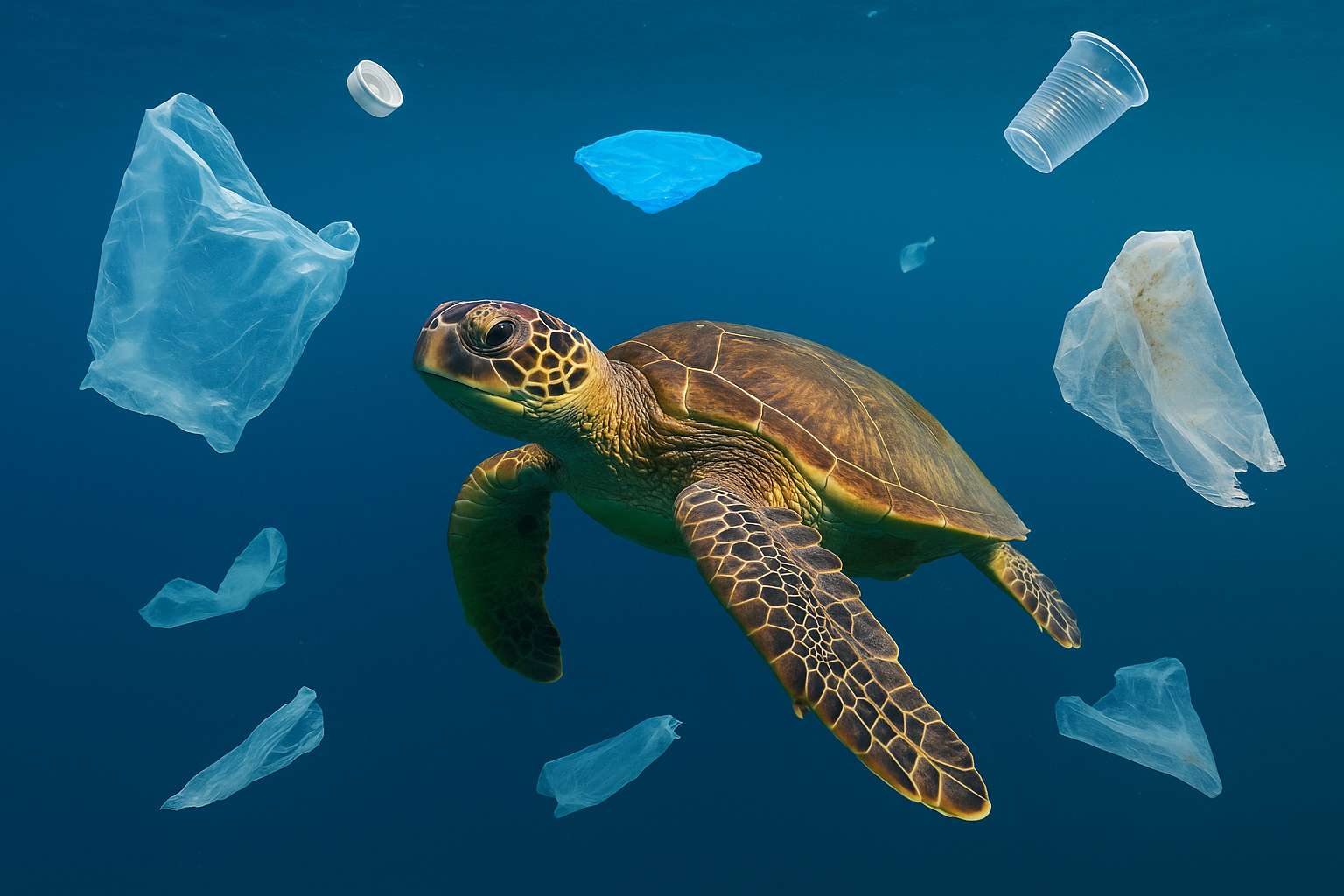Plastic pollution in the ocean has grown into a global crisis that threatens marine ecosystems at every level. Millions of tons of plastic waste enter the ocean annually, disrupting food chains, harming species, and contaminating coastal and deep-sea environments alike. While it may be invisible from land, the impact under the surface is both devastating and widespread. The effects of plastic pollution on ocean life are far-reaching and dire, with many species struggling to survive due to the growing burden of pollution.
1. Sea Turtles Mistake Plastic Bags for Jellyfish

Sea turtles are especially vulnerable to ocean pollution effects on marine life due to their diet of jellyfish, which plastic bags resemble underwater. Ingesting plastic blocks their digestive systems, often leading to starvation. A 2018 study found that 52% of sea turtles worldwide have ingested plastic debris. Juvenile turtles are even more at risk due to inexperience.
In some coastal areas, plastic ingestion is now more common than not among turtle populations. While bans on single-use plastic bags are helping, more global enforcement is needed to reduce this deadly confusion in the wild. The effects of plastic pollution on ocean life are increasingly evident in these vulnerable populations.
2. Seabirds Feed Plastic to Their Chicks
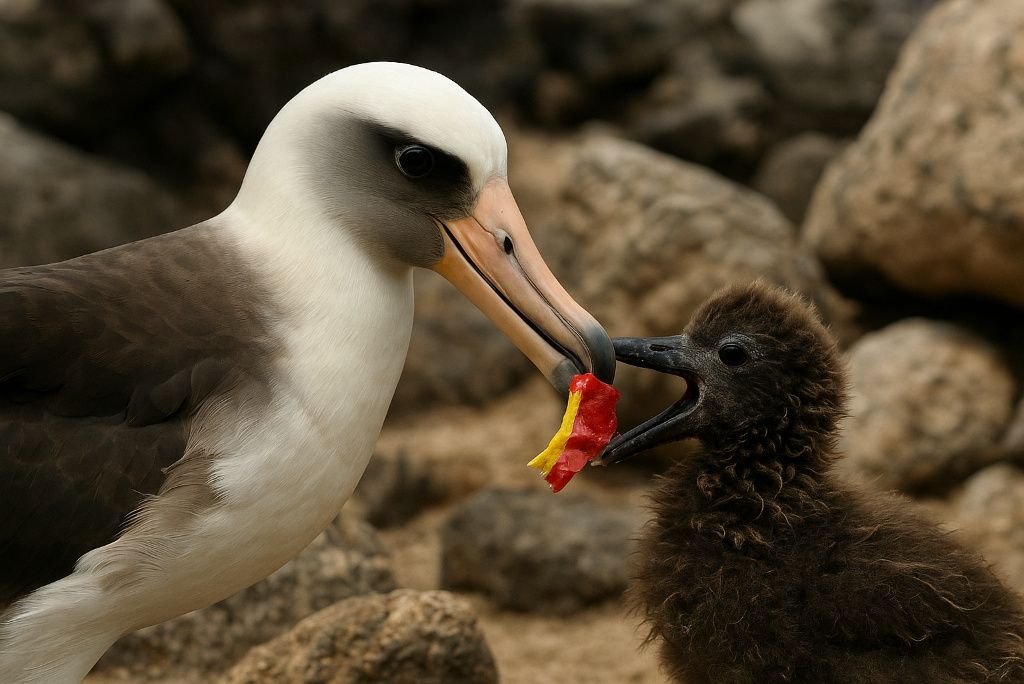
Many seabirds mistakenly collect floating plastic, thinking it is food, and bring it back to feed their chicks. Albatrosses, for example, have been photographed regurgitating bottle caps and cigarette lighters into the mouths of their young. According to a study in Proceedings of the National Academy of Sciences, up to 90% of seabirds have plastic in their guts.
This ingestion often causes internal injuries, blockages, or malnutrition. Since seabirds travel long distances, they distribute plastic pollution across ecosystems, making it a transboundary issue with global consequences. The ocean pollution effects on marine life are severe, contributing to a broader environmental crisis.
3. Microplastics Enter the Marine Food Chain
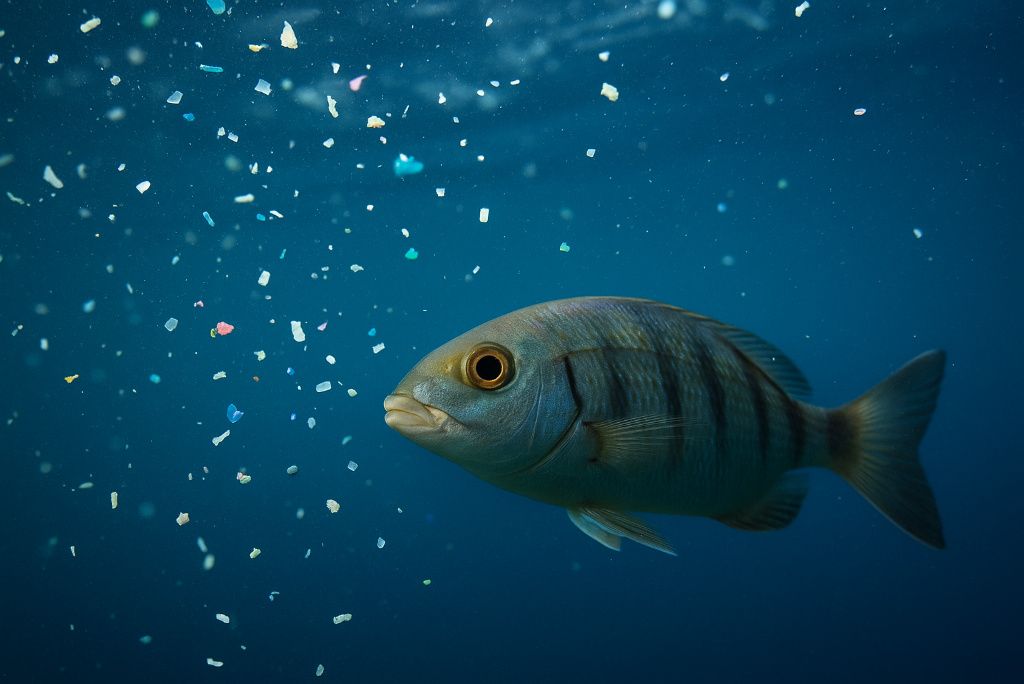
Plastic breaks down into smaller fragments called microplastics, which are easily mistaken for plankton by small fish and filter feeders. These tiny plastics absorb toxic chemicals like PCBs and pesticides, which then travel up the food chain as predators consume contaminated prey. Recent findings by National Geographic indicate microplastics are now found in seafood, salt, and even human stool samples.
This bioaccumulation poses unknown long-term health risks to marine life and humans alike and challenges the safety of global seafood supplies. The effects of plastic pollution on ocean life extend to the food chain, making the issue even more urgent.
4. Entanglement Injures and Kills Marine Animals
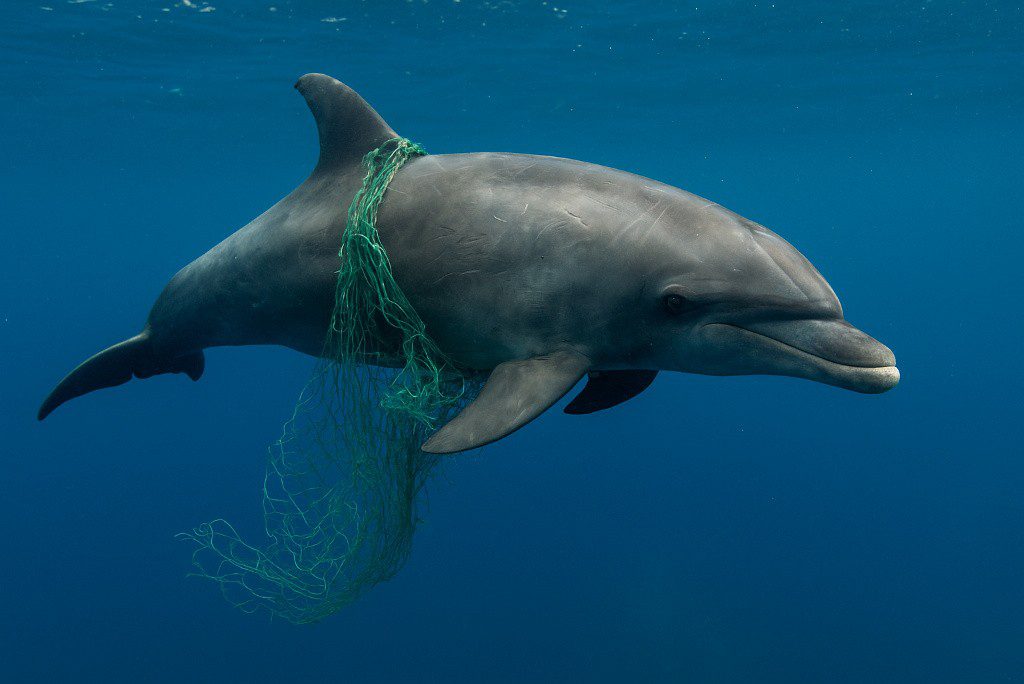
Abandoned fishing gear—often called “ghost nets”—along with six-pack rings and other debris, entangle marine animals. Seals, dolphins, whales, and even sharks can become trapped, leading to restricted movement, injury, or death. Ghost gear alone makes up an estimated 10% of all marine plastic waste.
Animals may drag heavy debris for miles, suffer from infection, or drown. Entanglement incidents have been recorded in every major ocean, underscoring the urgent need for improved fisheries management and retrieval programs.
5. Coral Reefs Are Being Suffocated
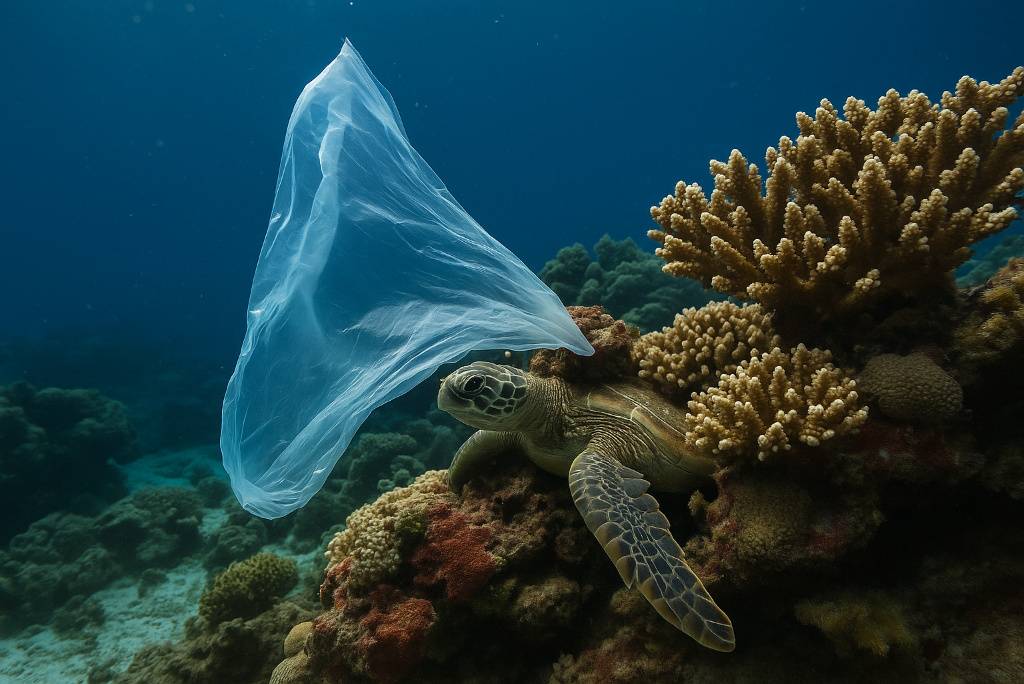
Plastic debris that settles on coral reefs causes physical damage and introduces pathogens. A 2018 study in Science found that corals in contact with plastic are 20 times more likely to suffer from disease. Debris blocks light and restricts water flow, which reefs rely on for health and growth. With reef systems already endangered by climate change and ocean acidification, plastic pollution adds another layer of stress, pushing some reefs to the brink of collapse, especially in the Asia-Pacific regions.
6. Ingestion by Whales Leads to Fatal Outcomes
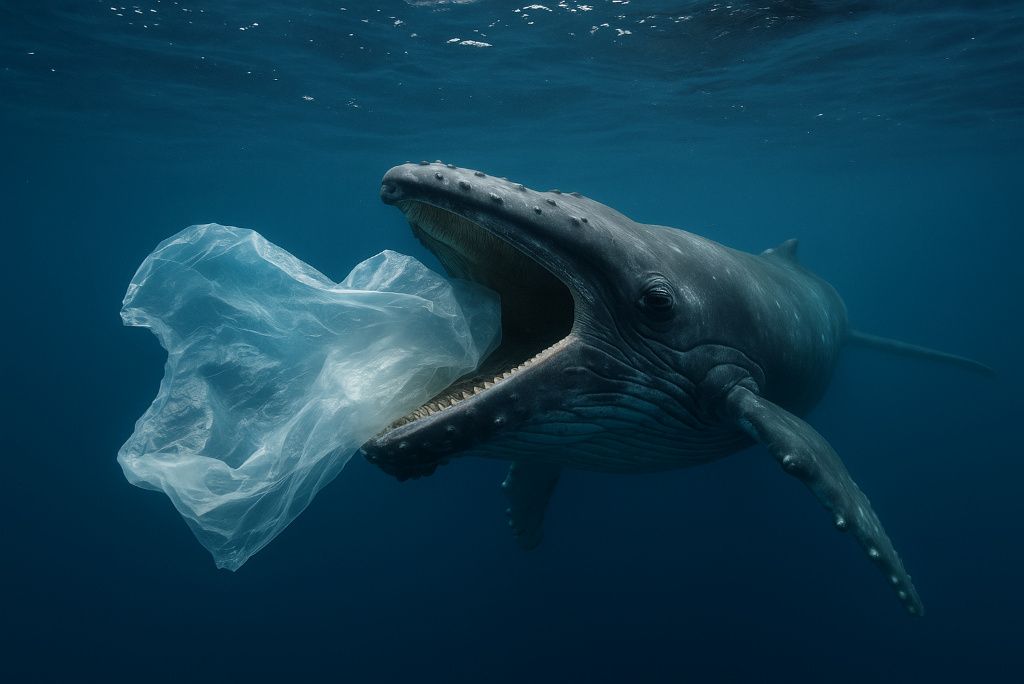
Whales, particularly baleen species, are at risk of consuming massive amounts of plastic as they filter-feed. In multiple high-profile incidents, dead whales have washed ashore with dozens of kilograms of plastic in their stomachs. In 2019, a whale in the Philippines was found with 88 pounds of plastic bags in its belly. Such consumption blocks nutrient absorption and leads to internal bleeding or starvation. These tragedies reveal the scale of pollution even in remote open waters.
7. Crabs and Lobsters Now Shelter in Plastic Waste

Crustaceans, including crabs and lobsters, have been observed using plastic containers and bottle caps as shelter in the absence of natural materials. While resourceful, this behaviour exposes them to chemical contaminants and increases the likelihood of ingestion or entrapment. A report in Marine Pollution Bulletin notes that plastic-sheltered crabs often ingest microplastics clinging to surfaces. Over time, this could affect their reproduction and behaviour, disrupting tidal ecosystems and food chains.
8. Marine Mammals Suffer Internal Injuries from Sharp Plastics
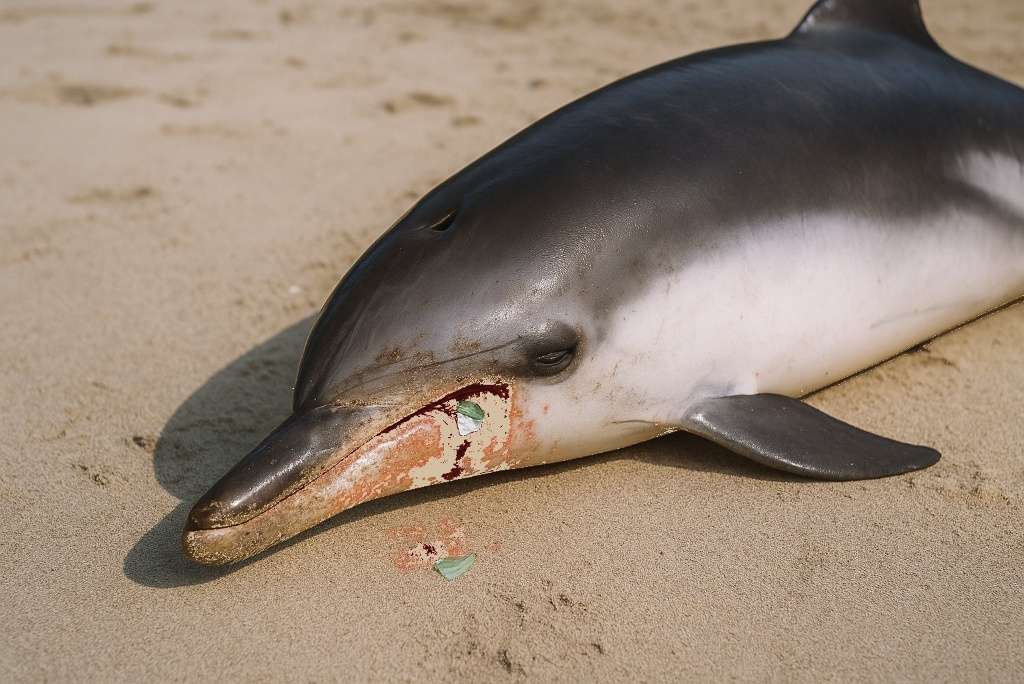
Unlike microplastics or bags, rigid items such as broken plastic containers, lighters, and pens can cause lethal internal injuries when swallowed. Dolphins and seals have been found with punctured organs and lacerated stomachs from such debris. A study by the Marine Mammal Centre in California highlights increased reports of gastrointestinal trauma in stranded marine mammals. These injuries often go undetected until necropsy, suggesting a much larger unseen impact on populations. (Source)
9. Toxic Additives in Plastic Disrupt Marine Hormones
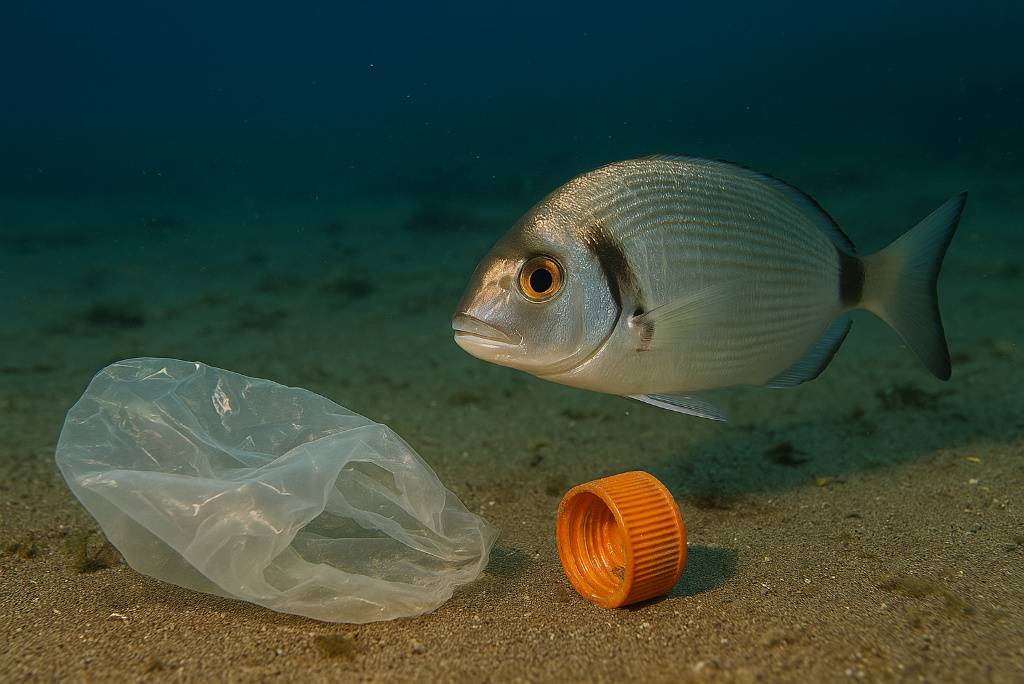
Many plastics contain harmful additives like bisphenol A (BPA) and phthalates, which leach into ocean water and are absorbed by marine life. These chemicals act as endocrine disruptors, altering hormonal balances and reproductive patterns in fish and invertebrates. Research published in Environmental Science & Technology shows altered gender ratios in fish due to exposure to plastic-derived compounds. Such disruptions can reduce population sustainability and threaten species diversity.
10. Deep-Sea Ecosystems Are Not Immune
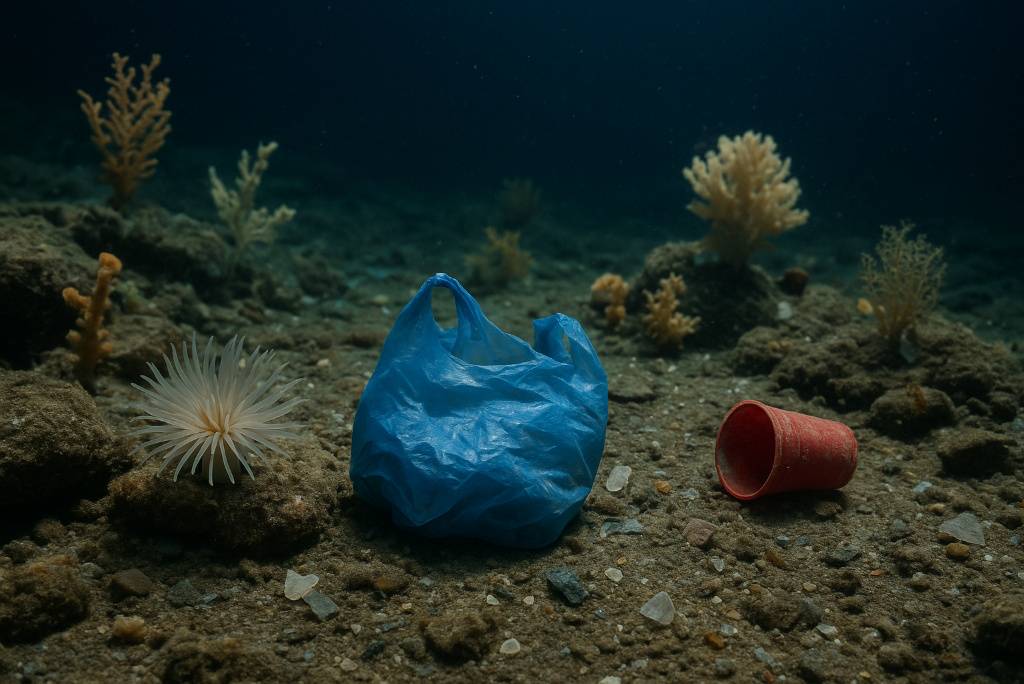
Contrary to common belief, plastic has been found at the ocean’s deepest points. In 2018, researchers documented plastic waste 11,000 meters down in the Mariana Trench. This highlights plastic’s near-universal reach and long lifespan. Deep-sea creatures, already adapted to extreme environments, are now ingesting debris, which may threaten their survival and affect previously isolated ecosystems. The effects of plastic pollution on ocean life extend even to these remote habitats.
11. Plastic Altering Marine Animal Behavior
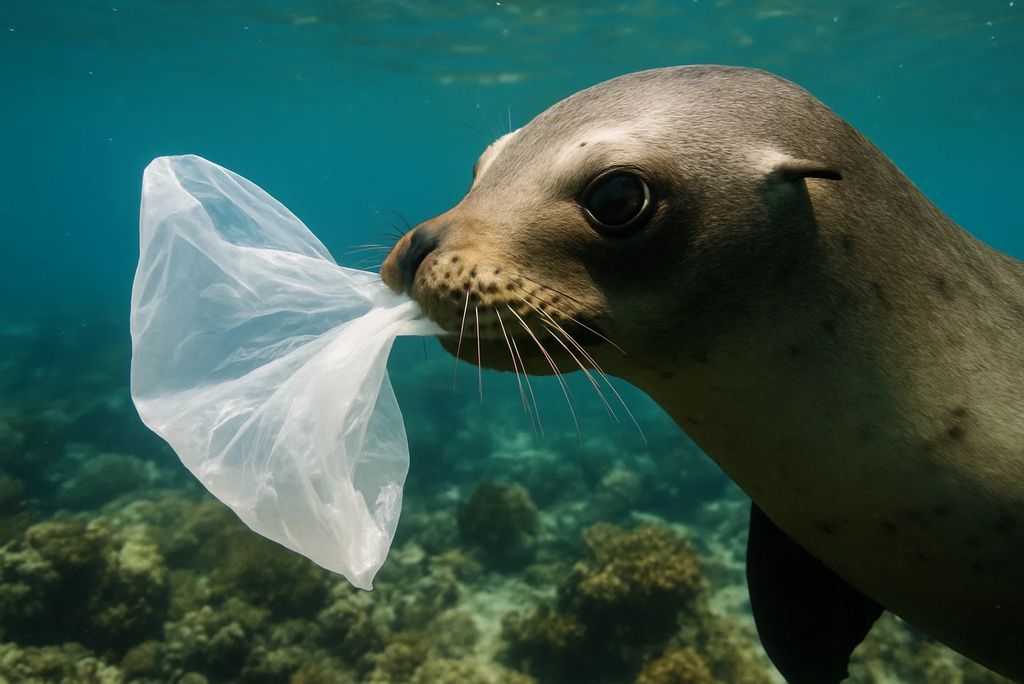
Studies suggest that the presence of plastic debris alters the natural behaviours of some species. For example, fish exposed to plastic-rich environments have shown decreased ability to avoid predators or locate mates. Behavioural ecologists from Plymouth University reported disrupted schooling patterns in fish due to sensory interference from plastic. These changes can weaken a species’ survival instincts and ripple through the food web.
12. Plastic Pollution Affects Coastal Economies
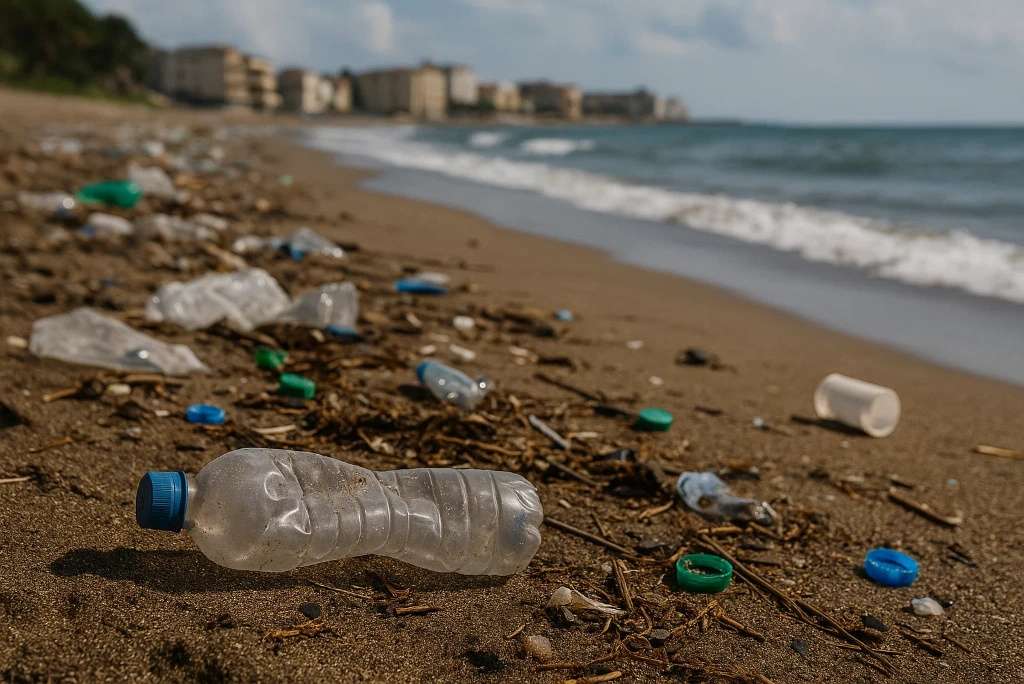
Beyond marine biology, plastic harms fishing industries and coastal tourism. Contaminated seafood, entangled nets, and polluted beaches reduce income opportunities for communities dependent on ocean resources. The UN Environment Program estimates that marine plastic pollution costs up to $13 billion annually in damages to marine ecosystems and economies.
Local fishers may see reduced catches, while tourist spots must invest heavily in cleanup efforts. The bottled deep ocean water market is also influenced by the contamination, as more consumers are concerned about the purity of the water.
13. Marine Plants Also Suffer from Debris
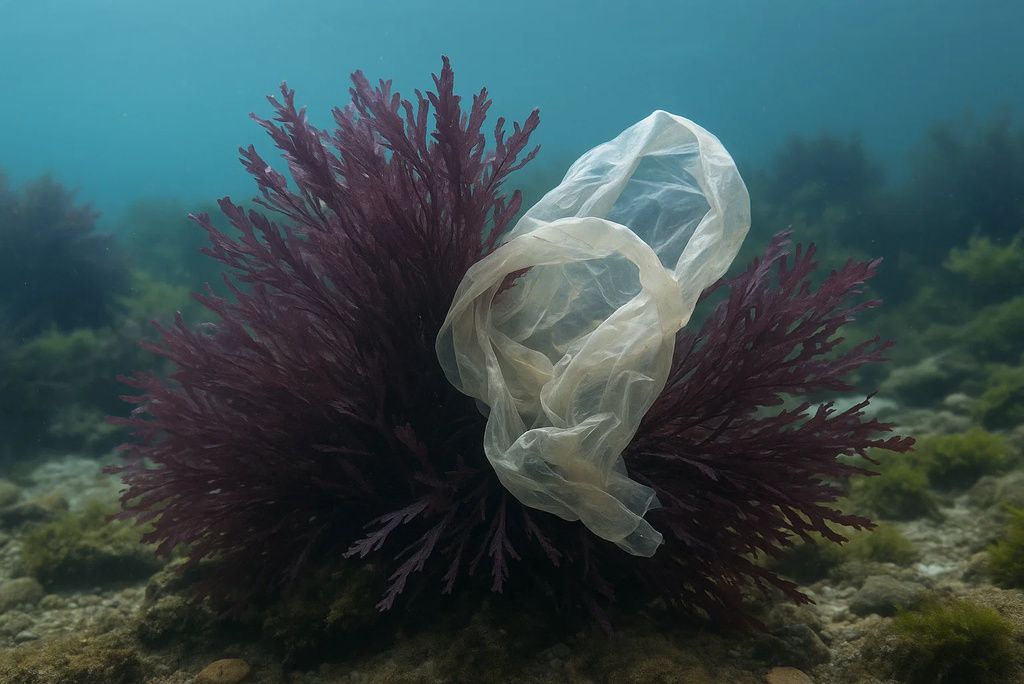
Plastic debris blocks sunlight and disrupts photosynthesis in underwater plants like seagrasses and algae. These plants serve as critical carbon sinks and breeding grounds for fish and invertebrates. Plastic shading can result in die-offs of entire plant beds, weakening biodiversity and accelerating climate change effects. A study in Frontiers in Marine Science found that plastic films reduced oxygen levels and plant growth in seagrass beds (Source).
14. Plastic Facilitates the Spread of Invasive Species
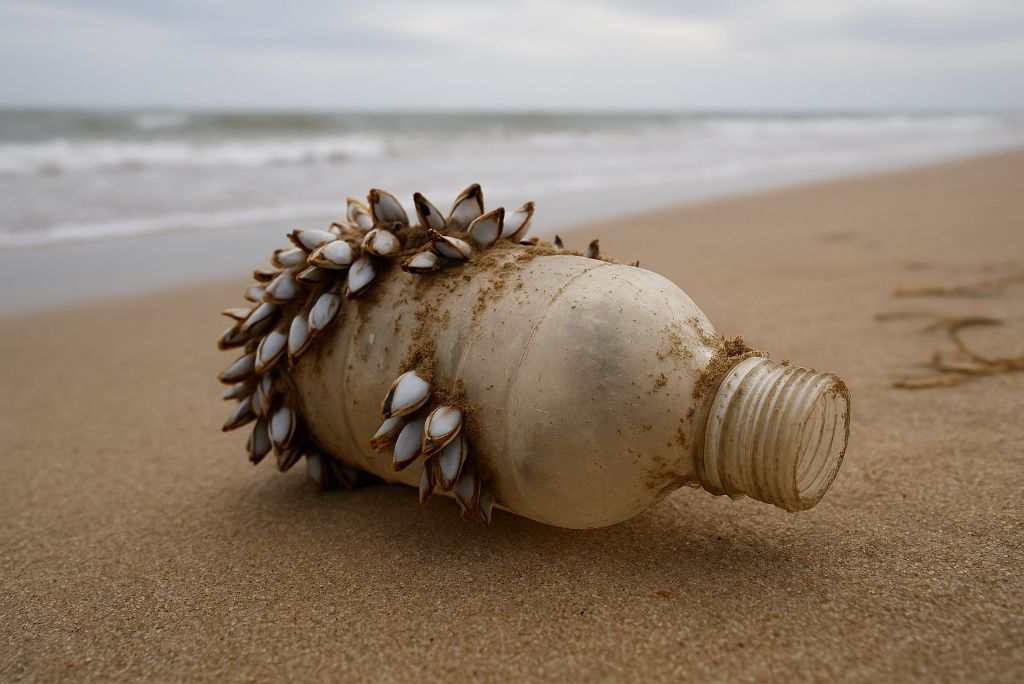
Floating plastic provides rafts for invasive species like barnacles and molluscs to travel long distances, colonising new environments. This artificial transport mechanism can destabilise native populations, leading to competition for food and space. A paper in Science showed that plastic is now a major vector for species invasions in marine environments. Unlike natural driftwood, plastic floats far longer and farther, increasing the risk of ecological imbalance.
15. Ocean Plastic Threatens Marine Sanctuaries
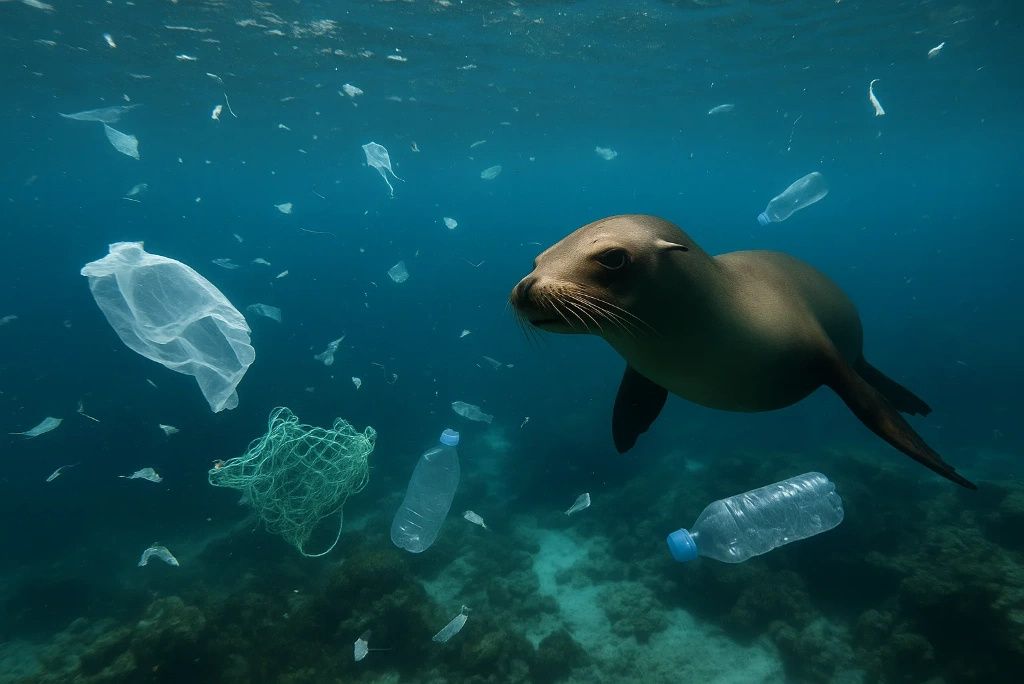
Even protected areas like marine reserves and national parks are not safe from plastic intrusion. Currents carry debris into these zones, undermining conservation efforts. Rangers report higher-than-expected debris even in isolated areas like the Galápagos and Great Barrier Reef. Sanctuary species—like rare reef fish or endangered sea turtles—are at direct risk, making cleanup operations and policy enforcement crucial for these “last safe spaces” of the sea.

